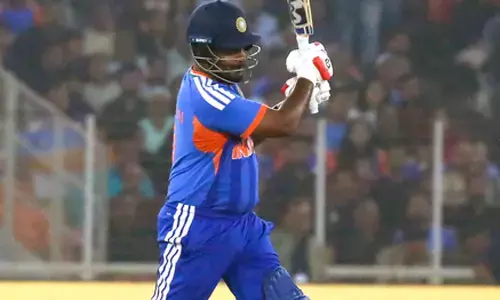Satish Dhawan Space Centre in Sriharikota gears up for India's navigation satellite launch

The 51.30 hour countdown for the launch of India\'s seventh and final navigation satellite on April 28 afternoon begun at 9.20 a.m on Tuesday at Sriharikota rocket port of Indian Space Research Organisation (ISRO), said a senior official.
Chennai: The 51.30 hour countdown for the launch of India's seventh and final navigation satellite on April 28 afternoon begun at 9.20 a.m on Tuesday at Sriharikota rocket port of Indian Space Research Organisation (ISRO), said a senior official.
"The countdown started at 9.20 a.m. The rocket PSLV-XL (polar satellite launch vehicle) will blast off from the first launch pad at 12.50 p.m. on April 28," P.Kunhikrishnan, director, Satish Dhawan Space Centre (SDSC), Sriharikota told IANS over phone.
The rocket port is in Andhra Pradesh, around 80 km from here.
He said the countdown is progressing normally.
The satellite IRNSS-1G (Indian Regional Navigation Satellite System-1G) is part of a constellation of seven satellites to provide accurate position information service to users across the country and the region, extending up to an area of 1,500 km.
Till date, India has launched six regional navigational satellites (IRNSS-1A, 1B, 1C, ID, 1E and 1F).
Though the full system comprises nine satellites -- seven in orbit and two on the ground as stand-by, the navigation services could be made operational with four satellites, ISRO officials said earlier.
Each satellite costs about Rs.150 crore while the PSLV-XL version rocket costs about Rs.130 crore. The seven rockets would entail an outlay of about Rs.910 crore.
The first satellite, IRNSS-1A, was launched in July 2013, the second in April 2014, the third on October 2014, the fourth in March 2015, and the fifth and sixth on January 20 and March 10 this year.
Once the regional navigation system is in place, India needs not depend upon other platforms.
The IRNSS is similar to the global positioning system (GPS) of the US (24 satellites), Glonass of Russia, and Galileo of Europe as well as China's Beidou.
While GPS and Glonass are fully functional global systems, the Chinese and the Japanese systems are offering regional coverage and Europe's Galileo is yet to be operational.
The IRNSS will provide two types of services -- standard positioning service and restricted service. The former is provided to all users and the latter is an encrypted service for authorised users.
Meanwhile, ISRO is in the process of developing the front-end radio frequency chips for the satellite navigation system. The initial version is expected to be ready this year, ISRO chairman A.S. Kiran Kumar told IANS earlier.


















